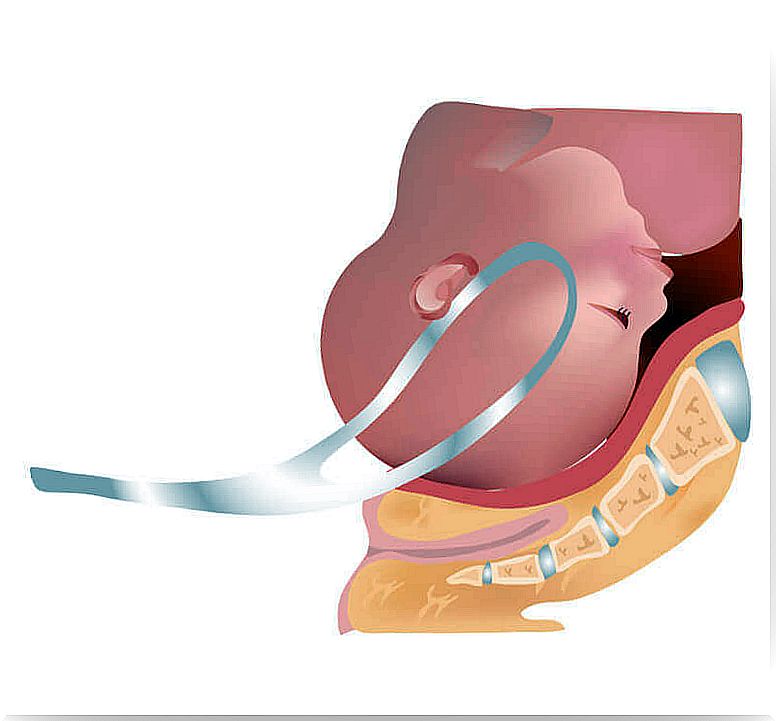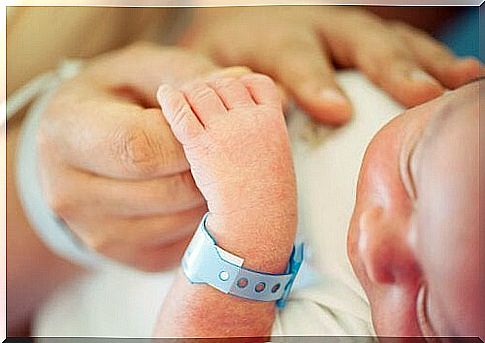Maternity Forceps: When Is It A Good Idea?

Do you know what a labor force is? You may have heard stories about it as a tool in assisted delivery that can help the fetal head out of the birth canal. We give you all the facts about how it works and when it is recommended to use it.
A birth forceps is used to help the baby leave the birth canal. At one end it has two crossed seaweed halves called spoons. The spoons are cup-shaped so that they can cover the baby’s head, similar to two hands. When the spoons close around the baby’s head, the midwife can then help pull the baby out.
Although they have long been considered dangerous , we want you to know all about when it is recommended to use a forceps, as well as the risks associated with it.
When recommending delivery forceps
Childbirth is natural, but sometimes complications arise and then it requires that you seek help that is not always completely natural. This is the case with a birth control.
The most common reasons for using a birth forceps are :
- Fetal injuries. The baby needs to get out of the birth canal quickly to avoid further complications.
- The mother has no power left. Childbirth can take many hours and sometimes the mother can become completely exhausted, so that she no longer has the ability to shake with as much force as needed.
- Natural childbirth is impossible. After too many hours of work, the baby needs a little extra help to get out of the birth canal.
Although these situations may sound quite common during childbirth, the midwife will only in very specific cases decide to use a forceps. The use requires strict monitoring of the baby’s position.

The forceps are used as extra help only in the final stage of delivery, when the baby is 2-3 centimeters from the end of the canal. At first it was thought that you could use the forceps to help when the baby was 10 centimeters in, but it has been shown that a birth forceps is only effective in guiding the child out in the final stages.
In addition to the above reasons , a number of requirements must be met:
- The uterus must be completely open.
- The amniotic sac must be broken.
- The baby’s head fits.
Risks with labor forceps
Childbirth with instruments has extra risks beyond the normal ones. The midwife and the medical staff present weigh these risks when making the decision to use a forceps. They only decide to use one when the conditions are the most favorable and the risks as small as possible.
The risks of using a birth forceps are:
- For the mother: Stretch marks in the perineum and / or sphincter. It can lead to incontinence or cracks, although these usually decrease during the postpartum period.
- The episiotomy scar may need more care. The incision is slightly larger, so it also needs more care.
- Greater blood loss. The delivery forceps are inserted into an area that is already very sensitive and painful.
- For the child, it can lead to contusions or bruising, which usually disappears after a few days.
- In some cases, a facial nerve can be compressed, which can lead to less paralysis. It usually disappears even after a few days.
Skull fractures and complications that are life-threatening for mother or baby are very rare.

Interesting facts about labor forceps
There are many historical references to labor forceps, but it is speculated that they were first used to deliver infants in the 16th century. In fact, they kept the use of a forceps as an aid during childbirth a secret for 100 years. The Chamberlen family of doctors became the best obstetricians of their time thanks to this “secret”.
If you want to learn more about this, you can visit the following link.









